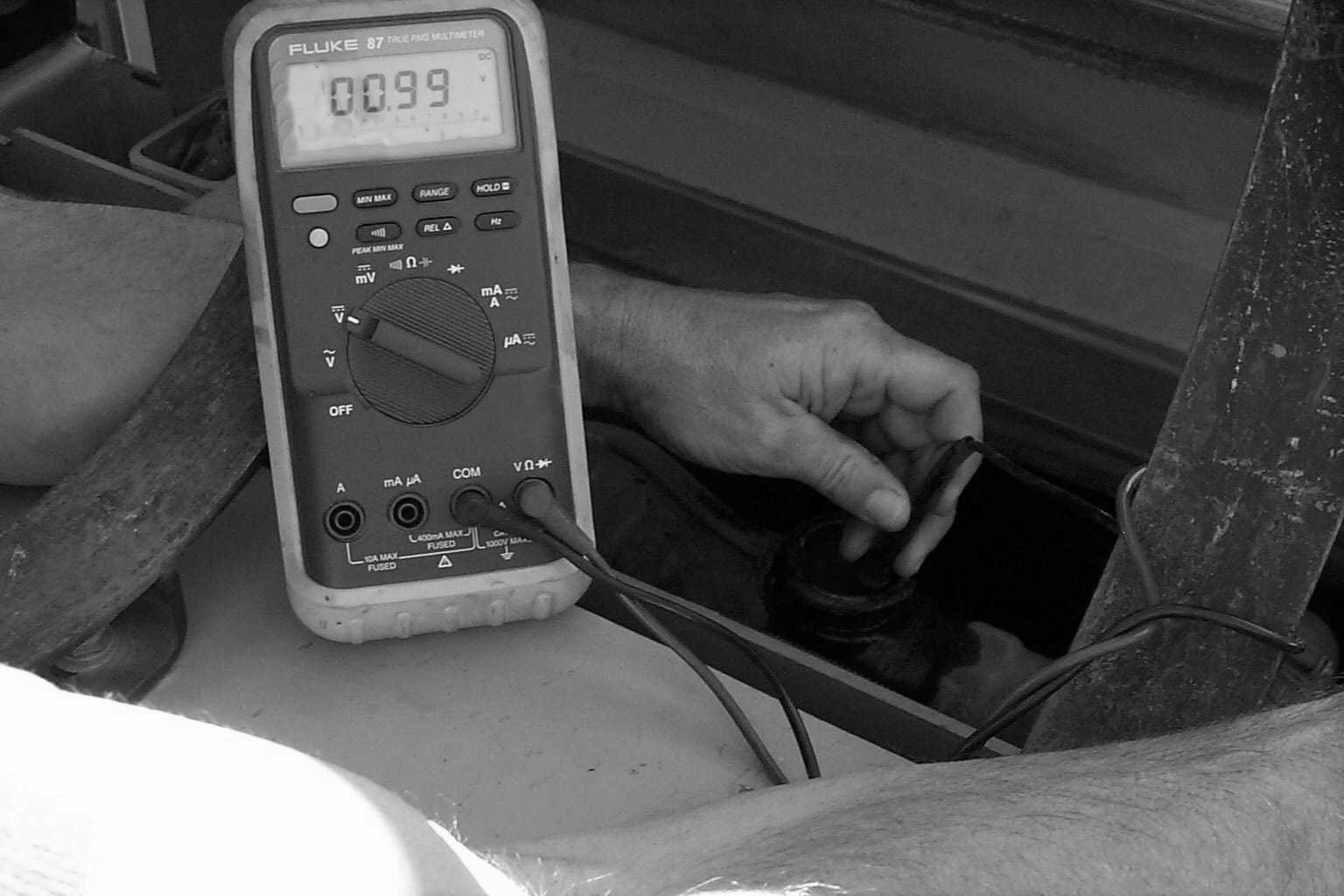Engine damage can result from an electrical current passing through the cooling system.
Many engine failures due to problems in the cooling system are caused by an electrical current passing through the coolant from electrical ground problems and the generation of static electricity elsewhere on the equipment. This can destroy an engine in 24,000 miles (38,600 km) regardless of the quality of cooling system maintenance. The only way it can be stopped is to correct the electrical problem causing the current.
The following maintenance tests were developed with the help of fleet maintenance superintendents, port engineers, and several people working in equipment maintenance. To correct this potential for engine destruction, we recommend it be incorporated in any preventive maintenance program.
Engine damage resulting from an electrical current can be pitted liners, oil coolers, radiators, extreme aluminum corrosion, and abnormal water pump and head gasket failure. Aluminum corrosion products will stop the flow of coolant through the oil cooler causing severe ring and bearing wear due to improperly cooled engine oil. Copper will plate out onto the iron components causing iron destruction. Abnormal rusting of cabs and other sections of equipment may also become noticeable.
Some of the problems which led to the development of this maintenance test procedure were:
In one application, the copper injector shells in a truck engine were being destroyed in 30 days. After careful analysis, it was discovered that a broken cab ground strap allowed the electrical current to ground through the coolant.
A 12-cylinder marine engine was destroyed by liner pitting. Laboratory testing of the coolant indicated that the overhauled engine was again being damaged. The starter, which was starting the engine with no apparent problem to the operator, was causing a 12-volt current to ground through the coolant.
Engine blocks in a large towboat were destroyed by pitting. The pitting was caused by an electrical current due to two defective electrical switches on the aftercooler systems and one switch on the air conditioning unit in the captain’s cabin.
The aluminum top tanks of truck radiators were pitting on a new fleet of trucks equipped with rubber air bag suspension on the rear ends. The rear ends were generating a current which passed up the drive shaft to the cooling system. Grounding the rear ends and transmissions stopped the problem before the engines were destroyed.
A large fleet of trucks made up of half tankers and half flatbeds, using the same brand of engines and trucks, lost 60 engines in one year. Fifty-four engines failed in the flatbeds while only six engines failed in the tankers. Tankers have a bonded ground system while flatbeds do not. The nine-to-nine ratio indicates the potential for damage.
A truck hauling plastic pipe was losing the engine every 100,000 miles (161,000 km). The operator noted the load was glowing because of static electricity due to air brushing down the open-ended pipe. The operator covered the pipe with a tarp and the engine lasted over 300,000 miles (483,000 km).
Test for cooling systems
A multimeter or voltmeter capable of reading both AC and DC currents is required. The meter needs to read 0 to the maximum voltage of the system being tested in tenths of a volt. The meter leads must be long enough to reach between the coolant and the ground side of the battery. An ohm function of a multimeter is very helpful to pinpoint areas of resistance in an electrical system that will cause an electrical current to ground through the coolant rather than the engineered electrical circuit.
Test for dry land machinery
- Attach the proper meter lead to the ground side of the battery, negative to negative or positive to positive.
- Install the second lead in the coolant touching the coolant only.
- Read the DC and AC voltage with all systems off. If a block heater is present, also take a reading with the heater turned on. If an automatic battery charger is present, as in a standby system, also take a reading with this system running.
- Read the DC and AC voltage with the electrical starter engaged.
- Read the DC and AC voltage with the engine running and all systems turned on: lights, heaters, air conditioning, two-way radio, and the radio on both standby and transmit.
- Remove the lead from the coolant and repeat the DC and AC voltage tests with the lead touching the outside of the engine block.
The above procedure will test a complete system except for an electrical current which can be generated by the rear-end and transmission. This is particularly true with air bag suspensions, rubber pad suspensions, and rubber mounted transmissions. Any current generated will travel up to the drive shaft to ground through the engine coolant. Grounding rear-ends and transmissions is strongly recommended.
Meter readings
- Voltage of 0 to .3 is normal in a coolant of a cast iron engine. Such an engine will be destroyed with time by .5 volts, and engine manufacturers are reporting .15 volts will destroy an aluminum engine.
- The current will be AC if the problem is due to static electricity.
- If the coolant shows an electrical problem with all the equipment turned on, turn off one system at a time until you finally turn of the system that stops the electrical current. When the current stops, this will indicate the electrical system causing the problem.
- Be particularly careful of starters. They can cause as much damage to an engine as a direct connection to an arc welder. This is due to the amperage present.
- Always change the coolant if a current is detected. The iron protecting chemicals is a properly inhibited coolant will be destroyed by the electrical current.
- If aluminum damage has occurred, check the oil cooler and radiator to be sure they are not stopped up with aluminum oxide corrosion products. This can lead to liner scoring and cause engine failure.

